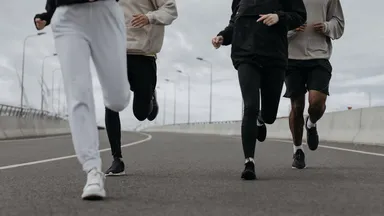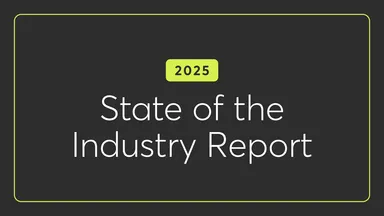
6 Australian Wellness Trends to Watch in 2021
Last updated: June 23, 2025
Welp, 2020 wasn't exactly what anyone could have predicted. With the coronavirus pandemic, routines were disrupted, and, as many Australians began to work from home in March, offices were abandoned. Those who couldn't work remotely began investing a lot more time and care into trying to stay safe and protecting others.
It's fair to say that the pandemic has impacted Australians. Thirty-nine percent say it's affected their physical health, and 44% say it's negatively impacted their weight. On top of this, nearly half (48%) say it's negatively affected their mental wellbeing. In 2021, we can continue to refill the tank.
The results of our annual Mindbody Wellness Index look a bit different this year, but one thing is clear: 2021 demands a re-prioritisation of self-care. We need to take better care of ourselves moving forward, and that might require a bit of creativity.
The Mindbody Wellness Index looks at Australian wellness across all seven dimensions: physical, emotional, intellectual, spiritual, environmental, social, and occupational. We surveyed thousands across the country, asking them about their wellness habits, including how stressed they feel, how close they are with friends and family, how much alcohol they drink, what their workout habits include, how they practice self-care, and much more.
Here's what you can expect to see throughout the rest of the year.

1. Aussies are minding their wellness
Almost 8 in 10 Australians stated that wellness is more important now than ever. It's not just about physical wellness, either. Australians are embracing their mental health after a year of decline caused by isolation and uncertainty. In fact, the number one reason for working out is to feel better (54%). The fitness industry is tackling mental health, too. Fitness Australia has recently launched a new e-learning program to support the mental health of exercise professionals and their clients.
Meditation, which can help with mental health and resilience, has seen a big boost. Sixteen percent said they started meditating or are meditating more now. MYND, Australia's first meditation studio has now opened in Sydney CBD, offering a place for clients to join classes with a focus on mindfulness, motivation, happiness, or relaxation.
More good news for Australia is that individuals are spiritually and socially well—two important dimensions of wellness. Forty-two percent say they're spiritually well. Just over one-third (34%) say they have a sense of belonging, feeling connected to their neighbourhoods and community.

2. Snackable workouts will continue to hit the spot
Workdays are more fluid than ever before. Childcare, work, and wellness are all happening in the same space—and often at the same time. Australians are grabbing time to work out whenever they can, and it's not always the longer sessions they used to log at the gym.
Just over a third of Australians (34%) say their workouts are a half-hour or less. These snackable workouts are giving Australians a chance to get a workout in when they might not have otherwise. Shorter sessions are proving effective and convenient when juggling competing priorities, so don't expect to see them go anywhere any time soon.
Shorter sessions may also make virtual workouts more palatable for those hesitant to try them. Those who aren't leveraging virtual workouts say they're boring (29%) or that they get too easily distracted when they're exercising at home (21%). It's not easy living in a pandemic, either. Snackable, shorter workouts are ideal for those who are experiencing burnout or just generally feeling depleted.

3. No touch, no problem: Touchless spa services offer a safe way to destress
High-touch services now have higher parameters. In 2019, 68% of Australians said they had gotten a massage during the year. Since COVID, though, only 17% have received a massage. High-touch services are of higher concern. A little over half of Australians (56%) say they're less interested in getting high-touch services like massages during the pandemic.
Touchless services like cryotherapy, compression therapy, salt caves, infrared saunas, IV drips, hyperbaric chambers, and float tanks offer a way for consumers to relax and recover—without any additional contact. Paramount Health in Sydney offers several no-touch services, including floatation and infrared sauna. More than a quarter are interested in trying a new no-touch service during COVID.
Don't expect touch to go away, though. A study from early 2020 found that 54% of people have too little touch in their lives. Remarkably, this was pre pandemic. While these no-touch services are ideal now, they'll likely be a complement to massages and other high-touch spa services after COVID.
With 32% of Australians reporting that they're stressed or extremely stressed, they need a way to decompress now. No-touch services provide no additional worry. Many of these services are new or even unknown to consumers. As Australians learn more about them, expect them to explore and try more no-touch services.

4. 2021: The year of overcoming fitness fears
COVID-19 forced Australians to reconsider their health and wellness. More than half of Australians (54%) say they're more focused on their health and wellness since the pandemic started. Of those who say they're more focused on it, 53% say the pandemic has made them realise they need to be healthier to withstand disease and illness.
Knowing it's important to work out is different than actually doing it, though. Despite many Australians' renewed interest in health, 17% say they rarely or never work out, and 19% are less focused on their wellness since March. Gym intimidation (aka gymtimidation) is stopping many.
When asked what would make them less intimidated to join a gym or studio, 56% said getting in better shape first. Ah, the Catch-22 of gymtimidation!
In 2021, virtual fitness offers a solution. More than one in ten (12%) say watching informative video tutorials would lessen their intimidation, and one in ten said that taking virtual classes first would make them more comfortable. There's a real option now for gymtimidated Australians to engage in fitness in a way they haven't been able to before. With a virtual option, wellness is increasingly inclusive.

5. Above-the-mask beauty services are front and center
While the percentage of Australians getting manicures and pedicures has dropped 25% from 2019 to 2020, many above-the-mask beauty services have stayed strong. Permanent makeup (including eyebrow tinting and microblading) have seen only a relatively small decline. BOTOX®, fillers, and similar treatments have been consistent. Lash extensions have only seen a 4% decrease.
Almost half of all Australians (44%) say they feel more confident when they get regular beauty and grooming treatments. Many beauty and grooming services are even seen as vital; 39% of Australians say beauty services like facials are a necessity, so it's likely we'll see people keen to get back into their normal beauty routines. Their main reason for enhancing appearances? They want to feel and look good, in addition to having more time. The biggest impact is above the mask.

6. Virtual should remain part of your service offering
With Australia's gyms and fitness studios now back open in full swing, it's still important to include virtual workouts as part of your service offering. The pandemic has taught us to be prepared for every eventuality, and therefore businesses must be prepared to scale up their online offering at a flick of a button.
When virtual exercisers rushed in earlier this year, they came to realise the benefits of virtual workouts. Not only are they commonly offered at a lower price point but it requires no commute time. Australians can also take advantage of new fitness types that might not be offered in their area. Even with gyms reopening, 33% of Australians will join for live stream workouts at least once a week. The same amount (33%) exercise to a pre-recorded fitness video. This hybrid approach to fitness offers the best of both and provides more opportunities for busy Australians to focus on wellness.
Whether it's taking time to refresh and recover with a beauty or wellness service or finding a workout that fits their schedule and comfort level, Australia will be more proactive with their overall health than they were in 2020. They have to be.



